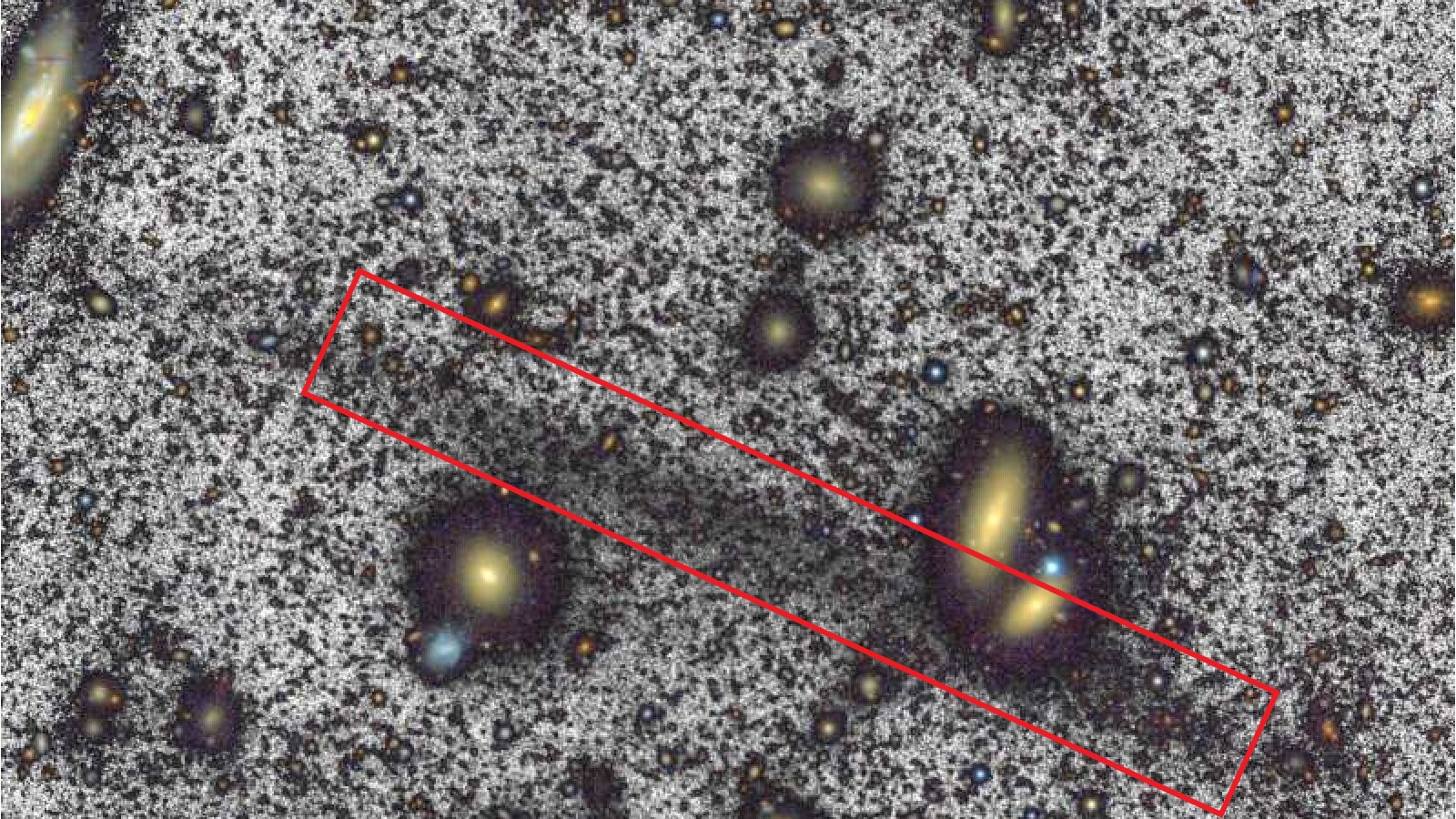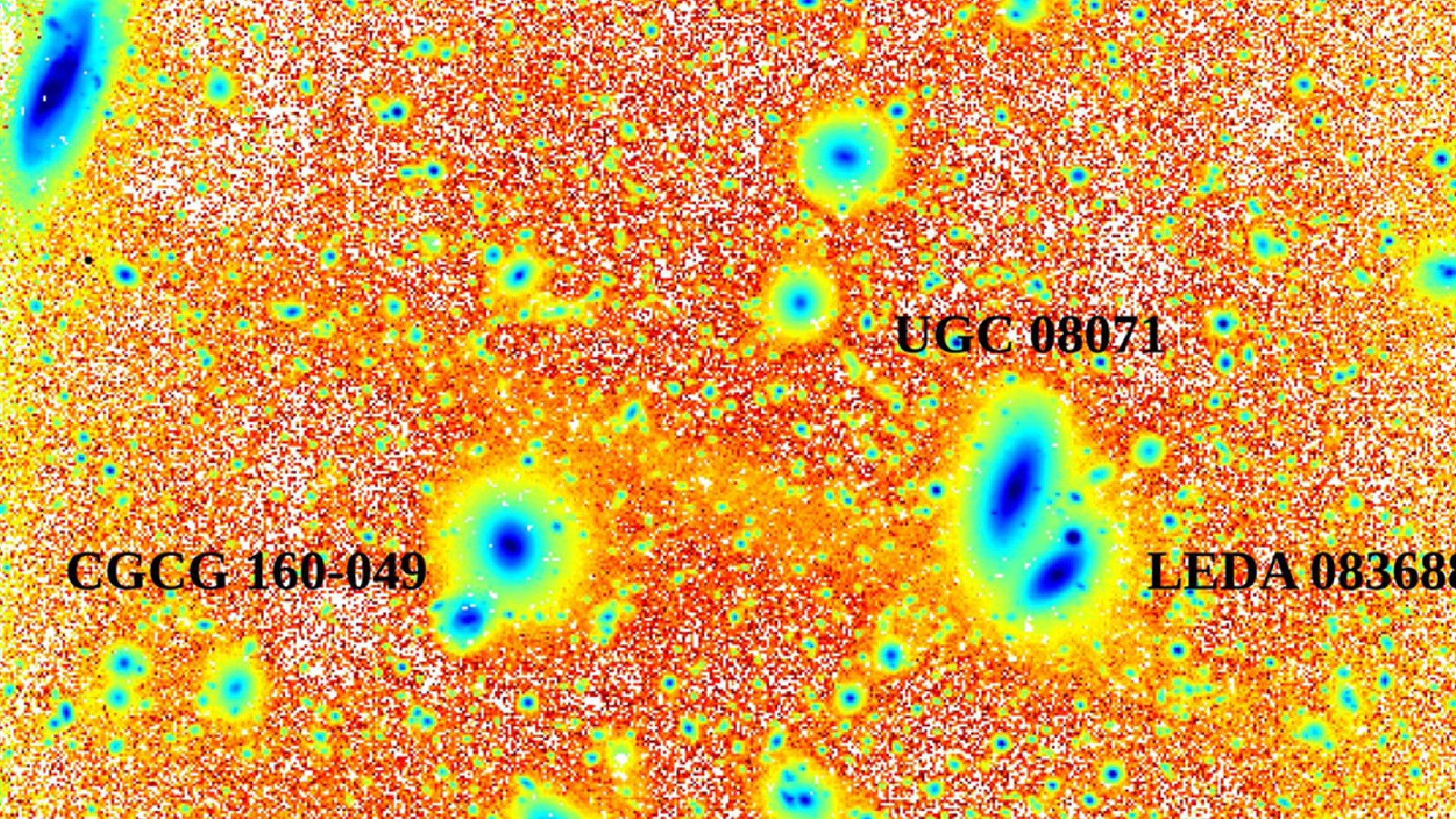Intergalactic 'stream of stars' 10 times longer than the Milky Way is the 1st of its kind ever spotted
While hunting for dark matter, astronomers accidentally discovered the first known stellar stream stretching between galaxies. The trail of stars is also the longest ever seen.

Astronomers have accidentally discovered the first known intergalactic trail of stars. The gigantic "stellar stream," which is around 10 times longer than the Milky Way, suggests that more of these structures could be lurking in deep space, a new study reveals.
Stellar streams are elongated threads of gravitationally entwined stars that have likely been ripped away from their parent galaxies or nebulas by the gravitational pull of other nearby galaxies. Scientists have mapped dozens of these streams within galaxies, including the Milky Way. But until now, none had been discovered in intergalactic space, meaning the space between galaxies.
In the study, which was published Nov. 30 in the journal Astronomy & Astrophysics, the researchers identified and mapped the first-ever intergalactic stellar stream, which stretches through the Coma Cluster, also known as Abell 1656, a group of more than 1,000 small galaxies located around 321 million light-years from Earth. The researchers named the first-of-its-kind structure the Giant Coma Stream — so named because it is also the largest stellar stream ever found.
"This giant stream crossed our path by coincidence," study lead author Javier Román, an astrophysicist at the Institute of Astrophysics of the Canary Islands, said in a statement. The team was initially studying halos of dispersed stars around the Coma Cluster, in an attempt to measure the dark matter that surrounds the galaxy group, when they came across the starry trail.
Related: How far apart are stars?

Study co-author R. Michael Rich, an astronomer at the University of California, Los Angeles, made the first observations of the Giant Coma Stream with his personal telescope. The team then turned to the more powerful William Herschel Telescope, located on La Palma in the Canary Islands, Spain, to properly study the stream.
The researchers were surprised to find the stellar stream lurking within the galaxy cluster. The structure is "a rather fragile structure amid a hostile environment of mutually attracting and repelling galaxies," study co-author Reynier Peletier, an astronomer at the University of Groningen in the Netherlands, said in the statement. Normally, you would expect something like this to be ripped apart by the more massive galaxies, he added.
Sign up for the Live Science daily newsletter now
Get the world’s most fascinating discoveries delivered straight to your inbox.
The team is unsure how the stellar stream has persisted and grown so large, but one explanation could be the elusive material they were originally looking for — dark matter. While this mysterious entity makes up most of the matter in the universe, it is effectively invisible and can be detected only through its gravitational interactions with visible matter. It's possible, the team said, that dark matter lurking within the galaxy group helped to stretch the stellar stream into its current shape.
The researchers are planning to study the stream with more powerful telescopes to learn more about the mysterious structure and its origins. They also hope to analyze individual stars within the stream to see if they are unique in any way.
The discovery of the Giant Coma Stream also opens the door for more intergalactic stellar streams to be found. The researchers believe there could be many more out there and hope that increasingly advanced telescopes, coupled with their findings, could help other astronomers find more of these stellar streams.

Harry is a U.K.-based senior staff writer at Live Science. He studied marine biology at the University of Exeter before training to become a journalist. He covers a wide range of topics including space exploration, planetary science, space weather, climate change, animal behavior and paleontology. His recent work on the solar maximum won "best space submission" at the 2024 Aerospace Media Awards and was shortlisted in the "top scoop" category at the NCTJ Awards for Excellence in 2023. He also writes Live Science's weekly Earth from space series.









